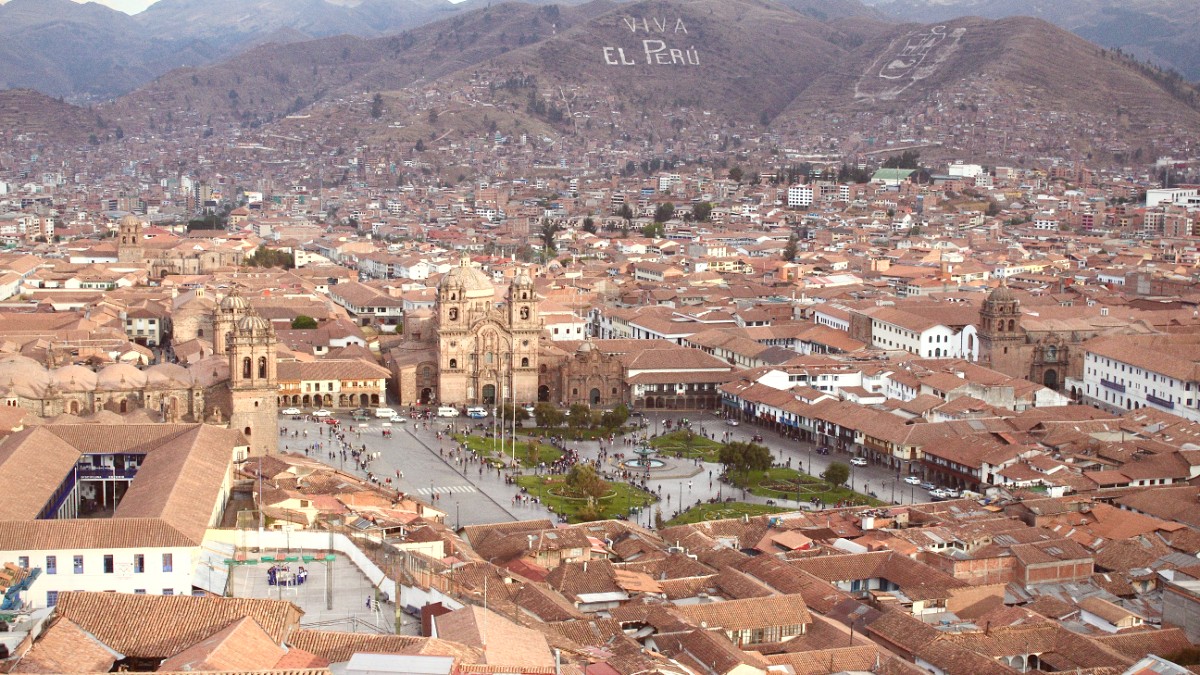
Peru
Cusco is located in the Cusco Region, nestled within the Urubamba Valley, widely known as the Sacred Valley of the Incas. This high-altitude valley runs through the Peruvian Andes, showing dramatic landscapes of towering peaks, terraced farmlands, and winding rivers. The city itself sits above the Apurímac River to its southwest, a waterway that eventually joins the Amazon basin. Its location in the heart of the Andes yields an unique mountain climate, with distinct dry and wet seasons. The surrounding topography shaped Inca civilization, influencing agricultural practices, spiritual beliefs, and strategic defenses. Cusco's position made it a natural focal point, connecting diverse regions of the vast Inca Empire. This geographical setting also means visitors appreciate stunning panoramic views from various points within and around the city. The thin air constantly brings to mind the city's lofty perch.
Cusco is located in the Cusco Region, nestled within the Urubamba Valley, widely known as the Sacred Valley of the Incas. This high-altitude valley runs through the Peruvian Andes, demonstrating dramatic landscapes of towering peaks, terraced farmlands, and winding rivers.
The city itself sits above the Apurímac River to its southwest, a waterway that eventually joins the Amazon basin. Its location in the heart of the Andes means the city experiences an unique mountain climate, with distinct dry and wet seasons. The surrounding topography shaped Inca civilization, influencing agricultural practices, spiritual beliefs, and strategic defenses.
Cusco was the very heart of the Inca Empire. From the 13th to the 16th century, it served as the sprawling capital, known as Qosqo in the Quechua language, meaning "navel of the world." The Incas considered it the cosmological center of their universe. The city's original layout, shaped like a puma, an important Inca symbol, shows their advanced urban planning. Massive, precisely cut stone walls, constructed without mortar, are a testament to remarkable engineering and artistry. These structures, like the Qorikancha (Temple of the Sun) and Sacsayhuaman fortress, stood as a testament to Inca power, spiritual devotion, and sophisticated architectural skills. In 1983, UNESCO recognized its extraordinary value by designating it a World Heritage Site.
When the Spanish conquistadors arrived in 1532, they largely dismantled Inca religious and administrative buildings, using the existing Inca foundations as bases for their own colonial structures. This formed an unique architectural fusion, visible throughout the city. Grand churches and ornate mansions stand directly atop Inca walls, a tangible layer of history. This blend of Inca and Spanish influences shapes Cusco's character, presenting a living museum of two powerful civilizations. The city became a significant colonial hub, continuing its role as a regional center for trade, religion, and culture.
Foundation of the Inca Empire with Cusco as its capital.
Arrival of Spanish conquistadors; end of Inca rule.
UNESCO World Heritage Site designation for Cusco.
Major tourist destination and living cultural center.
When the Spanish conquistadors arrived in 1532, they largely dismantled Inca religious and administrative buildings, using the existing Inca foundations as bases for their own colonial structures. This formed an unique architectural fusion, visible throughout the city. Grand churches and ornate mansions stand directly atop Inca walls, a tangible layer of history.
Once the most important temple in the Inca Empire, dedicated mainly to Inti, the Sun God. The Spanish built the Santo Domingo Convent directly on its foundations, creating a striking blend of Inca and colonial architecture.
A massive Inca fortress on the northern outskirts of Cusco. Its impressive zigzag walls, built from huge, precisely cut stones, showcase advanced Inca engineering. It served both military and ceremonial purposes.
This blend of Inca and Spanish influences shapes Cusco's character, presenting a living museum of two powerful civilizations. The city became a significant colonial hub, continuing its role as a regional center for trade, religion, and culture.
Today, Cusco thrives as a major tourist destination and a living testament to its storied past. It serves as the main access point for visits to Machu Picchu and the Sacred Valley, drawing millions of travelers each year.
The city is renowned for its archaeological remains, which whisper tales of an ancient empire. Spanish colonial architecture, with its ornate balconies and red-tiled roofs, contributes another layer of charm. Its rich cultural heritage stays a powerful force, with traditional Quechua language and customs still widely practiced. The city presents a dynamic experience, from bustling plazas to quiet, cobblestone alleys, presenting a window into Peru's diverse identity.
The main starting point for journeys to the world-famous Inca citadel.
A city filled with ancient Inca ruins and Spanish colonial architecture.
A living display of traditional Quechua customs and modern Peruvian life.
Cusco presents an unparalleled journey into the heart of Inca civilization and colonial heritage. Its unique blend of ancient and modern, coupled with breathtaking Andean landscapes, marks it as a compelling destination for any traveler.